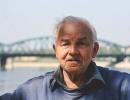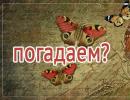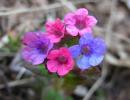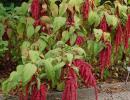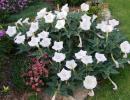Icon of John the Baptist: description, meaning, what it helps with. The life of the saint and the meaning of the icon John the Baptist helps create a strong family
John the Baptist is one of the main figures of Orthodox Christianity. He is worshiped by believers all over the world. It was he who laid his right hand on the Head of the Savior. It completes the history of the Old Testament Church and opens the milestone of the New Testament.
And the miraculous icon of the Baptist John the Baptist rests for many years in the St. John the Baptist Convent.
Brief biography
Six months before the birth of God's Savior, John the Baptist appeared to the world. He was a late, long-awaited and begged-for child in the family.
The young man spent his youth in an ascetic lifestyle; he lived in the desert for a long time. And at the age of 30, he began preaching and called people to faith and repentance in the Judean desert. His sermons were terse, but had great power: all of Judea came out to him and received Baptism in the waters of the Jordan.
Read about the Baptist of the Lord John:
John appealed to the fact that baptism from him is a preparation for receiving the Savior Jesus Christ. It is He who will soon come, take upon himself all the sins of humanity and destroy hell.
In his preaching works, the saint was not afraid to expose the sinful relationship of King Herod with his brother’s wife Herodias. For this he was taken into custody in the fortress and awaited his imminent execution. But the king was afraid of possible popular anger, because people revered him as a prophet. Herod's fear overpowered the hatred of Herodias, who was trying to kill the saint by any means.
One day she had an opportunity: on Herod’s name day, Herodias’ daughter Salome entertained the guests with sophisticated dances. The king really liked his niece’s dancing, and he invited her to ask him for everything she wanted. The mother persuaded her daughter, and Salome demanded the head of John the Baptist on a platter from Herod.
A squire was immediately sent to the prisoner’s dungeon, he beheaded the Baptist and gave his honest head to the girl on a platter. This day is celebrated annually in the liturgical calendar as the feast of the Beheading of John the Baptist.
Prophet, Forerunner and Baptist of the Lord John
Iconography
In the images, John the Baptist is depicted as a very thin man of middle age (approximately 32 years old). His Jewish-type face, dark from constant exposure to the sun, emphasizes the holiness and righteousness of the man. John's beard is medium-length, black, shaggy. The hair on the head is divided into strands. Clothes made of camel wool, tied up with a leather belt.
John's right hand is a blessing, and his left holds a scroll, which has the meaning of calling people to speedy repentance. On the man’s left shoulder there is a long Orthodox cross that looks like a staff. It means the imminent death on the Cross of the Creator of the World, Jesus Christ.
On the very first icon, painted in the 6th century, the saint was depicted alone, in full growth, in a hair shirt and with a scroll in his hand. At the top of the image, as well as on the left and right sides, there are medallions with the faces of the Mother of God and Jesus.
In the 11th century, icon painters created an image of John the Baptist, in which he is depicted bending towards Christ in prayer. He stands on the right side of the Savior. Later, icons were created where he is located on the left side of Christ.
In the 13th century, the image of the “Angel of the Desert” was painted, where the Baptist is depicted with wings. This image means that God the Father said that he was sending His Angel to earth so that he would clear the way for the Savior of the World.
What can an icon help with?
For many centuries, prayer books have asked John the Baptist:
- about help in finding a job;
- about protection from the intrigues of colleagues and the machinations of an evil leader;
- about protection from lies and slander of enemies;
- about healing head diseases and other ailments;
- about healing thoughts;
- about choosing the right path in life.
The saint benefactors beekeepers and is considered their patron. Also, prayer in front of the icon protects against headaches.
 “John the Baptist. Christmas". Temple of Veniamin of Petrograd, Moscow
“John the Baptist. Christmas". Temple of Veniamin of Petrograd, Moscow
Prayer Rules
Prayer to John the Baptist is an important vocabulary for Orthodox people. It is in it that love for Christ, great faith and humility are contained, giving strength and hope for salvation to every person.
You should pray alone or with the whole family, with a lit lamp or candle. A family is a small church, so it is recommended to offer prayers on special days and before a festive feast.
"Save me, God!". Thank you for visiting our website, before you start studying the information, please subscribe to our Orthodox community on Instagram Lord, Save and Preserve † - https://www.instagram.com/spasi.gospodi/. The community has more than 44,000 subscribers.
There are many of us like-minded people and we are growing quickly, we post prayers, sayings of saints, prayer requests, and timely post useful information about holidays and Orthodox events... Subscribe. Guardian Angel to you!
The prayer to John the Baptist the Baptist is one of the greatest in Orthodoxy. It contains love for the Lord and righteous faith, which give strength and hope to every Christian. She is filled with repentance and humility, which lead a person to repentance and God's forgiveness.
Prayer to the Prophet John the Forerunner and Baptist of the Lord
Prayer to the saint has truly enormous power, and everyone who turns to it finds long-awaited help and finds peace. Her story is great and tragic at the same time. John the Baptist was one of the closest predecessors of Christ, who predicted the coming of the Messiah. For a long time, the martyr lived in the desert, completely devoting himself to God, leading an ascetic lifestyle and finding true happiness in prayers to the Lord.
John became one of the main symbols of Christianity. Being quite famous for his sermons, he performed sacred immersions in water (ablutions), which are designed to cleanse the body and soul of a person from sins and grant a person repentance. This church rite has survived practically unchanged to this day under the name “sacrament of baptism” and has become one of the most revered and performed.
After all, every Orthodox person goes through it in order to get closer to God and receive invisible protection from him throughout his life.
The life of the Baptist himself had a tragic end - he was beheaded on the orders of the Jewish queen and her daughter. The truncated head of John became an honest symbol of Orthodoxy and also had its own complex and interesting history:
- The pious Joanna was the first to find her and, putting her in a vessel, buried her on the Mount of Olives;
- Then it fell into the hands of one of the ascetics, who found it while digging a ditch to lay the foundation of the temple. He kept the relic until his death, but then, fearing the destruction of the shrine by non-believers, he hid it in the same place;
- During the reign of Constantine, the Baptist himself appeared to one of the monks who came to Jerusalem to worship the Holy Sepulcher and pointed out the location of its head.
It was this period that became key in the history of Orthodoxy, for it marked the beginning of the celebration by Christians all over the world of the First Finding of the Head of John the Baptist.
Also come to our Orthodox group on telegram https://t.me/molitvaikona
Prayer to John the Baptist for headaches
Very often people turn to the prophet in order to relieve the physical pain that comes from the head, for he suffered torment and became a shrine that can heal the body and calm the soul. Even the image of John, which is presented on the holy faces in the form of the head of a suffering person, symbolizes an appeal with a request to relieve a headache.
They also come to him in order to find their own repentance, understand their thoughts and sort them out, because mental peace and physical healing give harmony, and it opens up the world in a new way, changing a person for the better. The ancestors revered him for his invaluable help in preserving the human race and economic affairs (crops, fertility, apiary).
John the Baptist is a prophet who has been glorified by the Church and people throughout the centuries. His righteousness is in honesty, and this, as we know, is the sure path to righteous faith and eternal grace.
Prayers to the Forerunner and Baptist of the Lord John:
Prayer 1
To the Baptist of Christ, preacher of repentance, do not despise me who repents, but copulating with the heavenly ones, pray to the Lady for me, unworthy, sad, weak and sad, fallen into many troubles, burdened by the stormy thoughts of my mind: for I am a den of evil deeds, by no means have an end to the sinful custom, for my mind is nailed down by earthly things: what I will do, I do not know.
And to whom shall I resort, that my soul may be saved? Only to you, Saint John, give the same name of grace, for you are before the Lord through the Mother of God greater than all who were born, for you were honored to touch the top of the King Christ, who takes away the sins of the world, the Lamb of God.
Pray to him for my sinful soul, so that from now on, at the first ten hour, I will bear a good burden and accept recompense with the last. To her, the Baptist of Christ, the honest Forerunner, the extreme Prophet, the first martyr in grace, the teacher of fasters and hermits, the teacher of purity and the close friend of Christ, I pray to you, I come running to you: do not reject me from your intercession, but raise me up, having fallen into many sins; renew my soul with repentance, as with the second baptism, of which you are the ruler: with baptism wash away the original sin, and with repentance cleanse every bad deed; Cleanse me with the sins of the defiled and force me to enter, even if nothing bad enters, into the Kingdom of Heaven. Amen.
Prayer 2
Holy Forerunner and Baptist of Christ John! This preacher of repentance, do not despise us who repent, but pray to the Lord Christ for us, unworthy slaves, sad, weak, fallen into many sins. We fear death, but we are not sick of our sins and we do not care about the Kingdom of Heaven: but do not despise us, the Baptist of Christ, honorable Forerunner, born in pain of all, mentor of fasters and hermits, teacher of purity and neighbor of Christ.
We pray to you, we resort to you: do not reject us who ask for your intercession, renew our souls with repentance, which is the second baptism: by your intercession before the Lord, ask for the cleansing of our sins. Unworthy lips cry out to you, and a humble soul prays, a contrite heart sighs from the depths: stretch out your most pure right hand and protect us from enemies visible and invisible.
Hey, Lord Jesus Christ! Through the prayers of St. John Thy Baptist, and even more so of Thy Most Pure Mother, our Lady Theotokos, save us, Thy sinful servants who repent of our sins. For You are the God of the repentant, and in You, the Savior, we place our hope, glorifying Your Most Holy Name, with Your Originless Father, and with Your Most Holy and Good and Life-giving Spirit, now and ever and unto ages of ages.
The Lord is always with you!
Watch another video prayer to the holy prophet John the Baptist:
For a Christian, the most revered saint after the Mother of God. His icons are in every Orthodox church. The Life of the Forerunner is fascinating and shocking with the steadfastness of the saint. The history of the iconography of the prophet is also very interesting, but in order to better understand it, you need to know the path of John the Baptist.
Conception of the Forerunner
The birth of the prophet was predicted by Saint Malachi, saying that the Forerunner would come before the Messiah and point to the Savior.
The father of John the Baptist was Saint Zechariah, a priest and righteous man. The mother, Elizabeth, was the sister of Anna, who gave birth to the Virgin Mary. Both parents of the Forerunner kept the commandments of God and led an immaculate existence. All their lives, Elizabeth and Zachary dreamed of having a child. But the Lord heard their prayers when they were old.
The father of the future prophet did not believe the Angel who announced the imminent birth of his son, for which he was punished. The priest was speechless and could not say another word.
Birth of a Prophet
For five whole months Saint Elizabeth hid her pregnancy, fearing ridicule, until the Virgin Mary came to her with the joyful news of the conception of the Savior.
After the birth of the prophet, on the eighth day, all relatives came to perform circumcision, which was considered necessary. Having suggested that Elizabeth name her son after his father according to custom, they heard a refusal and were very surprised at this decision. They asked Zechariah. He wrote that the child's name was John. Immediately the priest regained his ability to speak and hear. Word of this miracle quickly spread around.

The icon of John the Baptist in honor of his Nativity is found in almost all Orthodox churches.
Rescue of the prophet and return to the people
King Herod was also aware of the birth of the Forerunner. And after the news of the birth of the Messiah, I was completely afraid. He assumed that John was the Son of God. Therefore, he ordered the death of the prophet and, just in case, all infants under two years of age in Bethlehem and its environs.
This news forced the righteous Elizabeth to flee with her son into the desert. Zechariah, without revealing where his wife was with John, was killed. Forty days later, the prophet’s mother also died.
John the Baptist lived in the desert until he was thirty years old. He ate wild honey and locusts (according to some sources, this is a type of locust, according to others - plant foods that were eaten by the poorest segments of the population), drank water, and his clothes were made of camel hair. But the time has come for the prophet to appear to the people.

At the command of the Lord, the prophet came to Jordan with a call to sincerely repent of sins, correct oneself and do good deeds, since the time for the appearance of the Messiah had come. John baptized those who followed his instructions.
While preaching in the desert, the Forerunner heard about the miracles performed by Jesus and sent his disciples to find out if everyone had been waiting for him for so long. After this, Christ spoke of the prophet as an Angel who was preparing the way for him. Hence the icon of John the Baptist, depicting the Forerunner with wings and a scroll. The angel of the desert who began the sermon...
The Baptism of Jesus and the Beheading of the Prophet
Undoubtedly, the baptism of John the Baptist was not fully a Christian sacrament. But it was the Forerunner who sowed the seeds of faith in people and prepared the way for the Savior.
During the baptism of Jesus himself by John, the Holy Spirit descended in the form of a dove to earth, and the voice of the Lord announced that the Savior was the Son of God. The icon of Christ depicting his baptism clearly shows the miraculous signs of the coming of the Messiah. Prophet John fulfilled his mission as a messenger angel.

And, besides, he vehemently denounced the vices of everyone, regardless of their position in society. He even accused the king of abandoning his wife and cohabiting with his brother’s wife Herodias, for which he paid with his head. By order of King Herod, the prophet was executed by cutting off his head. But the Lord punished those responsible for the death of the Forerunner. The daughter of the king's wife Salome, at whose request the saint was executed, fell through on a frozen river. Her head remained on the surface and was cut off by sharp ice floes, and her body was not found at all. The king and Herodias, who persuaded his daughter to ask for the execution of the prophet, were exiled to Spain, where the earth opened up and swallowed them both.
Feast of John the Baptist
The church has several dates for the saint's memory:

All commemoration dates are called “The Cathedral of John the Baptist.” Why do they say this? These days, believers gather in churches to glorify the saint in prayers.
Prophet image
Each icon of John the Baptist is painted according to the following characteristics of the saint: a middle-aged man (about 32 years old), thin in build and face, which emphasizes his righteous life and holiness; with dark skin from constant exposure to the sun. His face corresponds to the Jewish type. The saint has a bushy black beard. Its length is shorter than average. Curly and thick hair of the same color, divided into strands. Clothes made of camel wool, leather belt.
The fact that the saint is especially revered by Christians influenced the variety of subjects of icons depicting the prophet. The earliest of them were written in the first half of the third century, depicting the Baptism of Jesus by John the Baptist on the Jordan River. For comparison: the first icon of the Mother of God was painted in the second century in the Roman catacombs.
Iconography of the Prophet John the Baptist
The first icon of the saint, depicting only himself, was painted in the second half of the sixth century. This is a full-length image of the prophet, wearing a hair shirt and holding a scroll in his left hand. At the top of the icon, on the right and left, are medallions with images of the Savior and the Mother of God.

In the tenth and eleventh centuries, an icon of John the Baptist bowed in prayer to Christ appeared. In this plot, the prophet was depicted to the right of the Savior, and starting from the thirteenth century - to the left.
At the end of the thirteenth century, the image of John the Baptist, the Angel of the Desert, appeared in the iconography of the prophet. This was preceded by several stages. Thus, in the tenth and eleventh centuries they depicted the moment of the prophet’s calling to serve. Here John the Baptist, against the backdrop of mountainous terrain, bowed in prayer. Then, by the middle of the eleventh century, an image of a saint appeared with an ax on a barren tree and a scroll in his hand. In addition, at the end of the 11th and beginning of the 12th centuries, iconography was formed depicting the acquisition of the head of the prophet. During the same period, the desert, the axe, the scroll and the head in the vessel were combined into one icon with the image of the praying Forerunner. And finally, at the end of the thirteenth century, this composition was supplemented by the image of the wings of St. John the Baptist. This is related to the statement about the prophet in the Gospel of Luke. According to this book of the New Testament, God said that he was sending his Angel to prepare the way for the Savior.
Subjects of the iconography of the prophet and the spread of his image in Rus'
There are compositions with the participation of the entire holy family, which depict the infants John, Jesus, as well as their parents.
Among the handwritten Orthodox images there is an icon of the Mother of God praying together with the Forerunner to Christ for the human race. Evidence of greater veneration for the prophet than for the apostles is the intercessory prayer at the liturgy in churches, when the name of the saint is pronounced immediately after the mention of the Mother of God.

In Rus', icons depicting the prophet began to spread especially widely during the period when Ivan the Terrible was king. Among the authors of the images of John the Baptist one can highlight Andrei Rublev, Procopius Chirin, Gury Nikitin,
We can say that the icon of Christ is on a par with the image of the holy prophet, because the Forerunner is especially revered by Christians. It was John the Baptist who informed the world about the long-awaited coming of the Messiah, and with his example and preaching lit the flame of faith in the hearts of people, urging them to cleanse themselves and accept the Savior. Our intercessor and Angel of God is the holy prophet John the Baptist!
John the Baptist helps with what, prayer, life. The image of John the Baptist is an image of a righteous life, repentance and humility, which every Christian should strive for in order to believe the Word of God and know his eternal grace. John the Baptist, John the Baptist - according to the Gospels, he was the closest predecessor of Jesus Christ, who predicted the coming of the Messiah. He lived in the desert as an ascetic, preached and performed sacred ablutions for the cleansing of sins and repentance of the Jews, which later became known as the sacrament of baptism. John washed (baptized) Jesus Christ in the waters of the Jordan River, dipping him into the water. The Forerunner was beheaded at the request of the Jewish queen Herodias and her daughter Salome.
The Holy Prophet John the Baptist became the greatest of the righteous - he completed the history of the Old Testament Church and opened the era of the New Testament, for he came into the world to announce the appearance of the Messiah Christ, who would take upon himself the sin of all people. The story of the appearance of the Baptist on earth began even before his birth and was shrouded in divine mystery. As is known from the Gospel, the parents of Saint John the Baptist were righteous people - the priest Zechariah and Elizabeth. Having lived to an advanced age, they were often condemned by others because they did not have children due to the woman’s childlessness. And this in those days was considered God's punishment. But their prayers were heard - and the long-awaited son was born. This was a testament to the power of the Lord and a sign that this child would be special and his deeds would be great. The Archangel Gabriel also announced this to his father in the temple and ordered him to name his son John. Already from a young age, John’s lifestyle was quite unusual: he went into the uninhabited desert of Judea and settled in a wild cave, where he remained in prayer until he was 30 years old. John wore the simplest clothes, was extremely abstinent in food, practically did not communicate with people - only with God, waiting for him to call him to serve. Later he read sermons and performed the sacrament of baptism.
For many centuries, believers have venerated Saint John the Baptist. He is asked for help in work and for a happy marriage, also in healing head diseases. People who have problems making choices in life also turn to him - they come and ask him to guide them on the true path and choose the right path in life. The first prayer is to the Baptist of Christ, honorable Forerunner, ultimate prophet, first martyr, mentor of fasters and hermits, teacher of purity and neighbor of Christ! I pray to you, and running to you, do not reject me from your intercession, do not forsake me, who have fallen through many sins; renew my soul with repentance, like a second baptism; Cleanse me, the sins of the defiled, and compel me to enter into the Kingdom of Heaven, even if nothing bad enters. Amen. Second prayer to the Baptist of Christ, preacher of repentance, do not despise me who repents, but copulating with the heavenly ones, pray to the Lady for me, unworthy, sad, weak and sad, fallen into many troubles, troubled by the stormy thoughts of my mind. Because I am a den of evil deeds, with no end to sinful customs, my mind is nailed down by earthly things. What will I do? We don't know. And to whom shall I resort, that my soul may be saved? Only to you, Saint John, give the same name of grace, for you are before the Lord through the Mother of God greater than all those born, for you have been honored to touch the top of the King Christ, who takes away the sins of the world, the Lamb of God. Pray for my sinful soul, so that from now on, in the first ten hours, I will bear a good burden and accept recompense with the last. To her, the Baptist of Christ, an honest Forerunner, an extreme Prophet, the first martyr in grace, a teacher of fasters and hermits, a teacher of purity and a close friend of Christ! I pray to you, I come running to you: do not reject me from your intercession, but raise me up, cast down by many sins. Renew my soul with repentance, as with the second baptism, since you are the ruler of both: with baptism wash away the original sin, and with repentance cleanse every bad deed. Cleanse me, defiled by sins, and force me to enter, even if nothing bad enters, into the Kingdom of Heaven. Amen.


